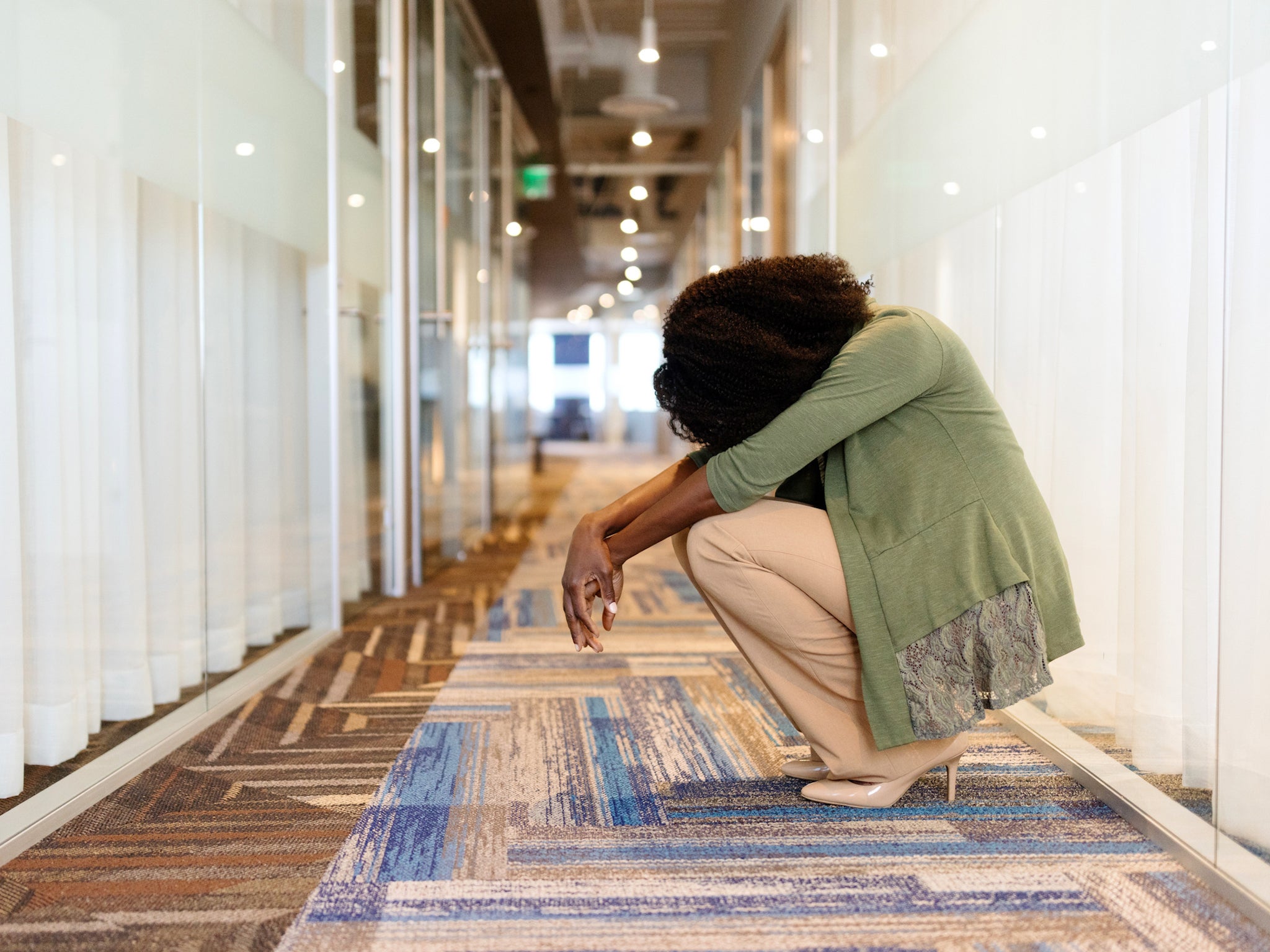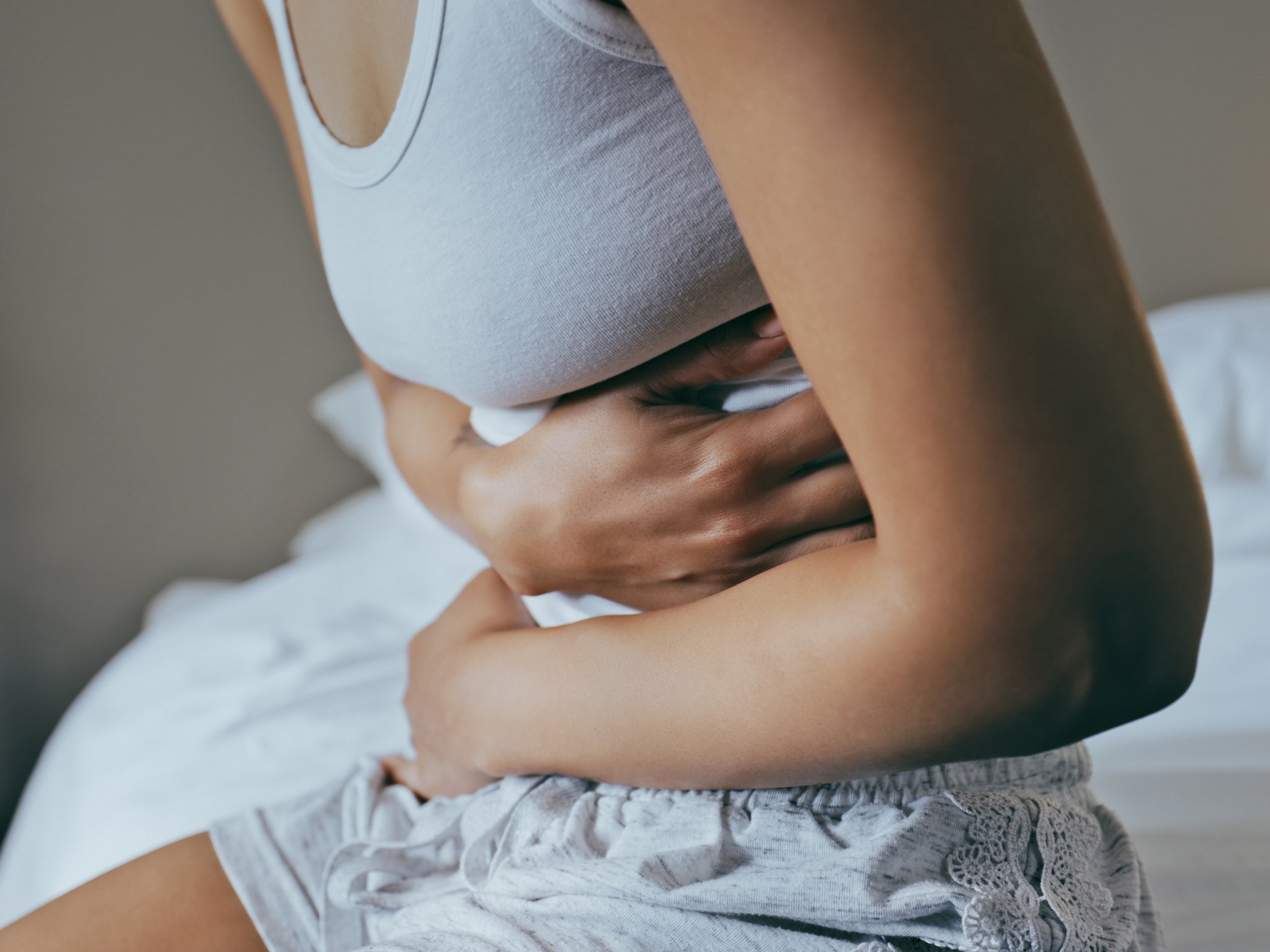
Have you ever been so physically and emotionally overwhelmed by pain, exhaustion and nausea that you can barely lift yourself off the sofa? Never mind managing to be fully present for a full day’s work on top of the commute there and back. I have, and it’s a monthly occurrence, thanks to the triple whammy of endometriosis (where tissue grows outside of the uterus), adenomyosis (where the uterine lining grows into the muscular wall of the uterus) and polycystic ovarian syndrome (a hormonal and endocrine condition causing irregular periods and excess androgens).
Being at the mercy of what studies suggest is a genetic lottery, I’ve grappled with heavy, prolonged and hard-to-predict periods since my teens and during my early twenties my symptoms took a turn for the worse. I was facing pelvic, leg and joint pain and extreme bloating even outside of my periods. I made frequent hospital appointments to try and pinpoint the cause.
It took me a total of seven years to be diagnosed with PCOS, 10 years to be diagnosed with endometriosis and a further two years to receive my adenomyosis diagnosis. I’m thankful that most of my professional roles have allowed me to work from home during my flare-ups and take time off for appointments. But not everyone can make use of remote-work arrangements or even discuss their menstrual health with management for fear of discrimination.
A new menstrual leave petition aims to change that. Launched on 30 July, the Introduce Statutory Menstrual Leave for People with Endometriosis and Adenomyosis petition calls on the UK Government to introduce paid menstrual leave for those with diagnosed pelvic pain.
The petition urges the government to roll out similar provisions to those of EU countries such as Portugal and Spain, providing up to three days of menstrual leave per month for those with diagnosed menstrual conditions – including dysmenorrhea or painful menstruation. It ensures full employment protections, confidentiality and non-discrimination. It also demands that no woman, trans man or non-binary person with menstrual cycles be forced to endure debilitating periods, painful bowel and bladder movements, nausea or fatigue in the workplace, or be penalised for taking time off to recover.
Within 24 hours of its launch, the petition had garnered more than enough signatures to receive a Government response. One week later, it was halfway to receiving the number of signatories required to be considered for a debate in Parliament.
A far-reaching issue
Around 1.5 million women in the UK are affected by endometriosis, according to 2011-2021 census data. Though this represents approximately 4.38 per cent of the UK workforce, the Office for National Statistics (ONS) suggests this number is likely to be higher due to misdiagnoses.
Dubbed “the missed disease” by researchers, women have been shown to experience delegitimisation at every stage of endometriosis diagnosis and management, while trans men, non-binary people and people of colour are statistically less likely to be diagnosed with the condition, recent studies show.
For lead campaigner and women’s health advocate Michelle Dewar, the rapid public support is a testament to the necessity of such legal protections. “It shows how supportive the community is, but it also shows how needed it is,” Dewar told The Independent. “I feel like it will protect women. I feel like it will empower women. I feel like women will feel heard, included and relieved.”
The campaign is a personal one for Dewar, who after her diagnosis of PMDD and endometriosis, chose to undergo medical menopause at just 23 years old due to the severity of her symptoms and their impact on her life. “It shut me down completely [...] It’s soul-destroying,” she says.
Read more: Rage and autoimmune disease: is there a link between suppressed anger and the women’s health crisis?
At the time, Dewar was working in a funded position at a local council and was on track for a renewal of funding that would make her role permanent. “I was so happy, I was over the moon,” she recalls after finding out that the funding had been secured. Then, her surgery letter arrived. Dewar explained to her manager that she would need between four and 12 weeks to recover from the procedure.
“The next day, I was pulled in by a senior and sat down and told there had been a mistake. The funding wasn’t there,” she said. “I was getting all the praise in the world for how well I was doing at that point [...] But after two years, my boss was just able to turn her back on me.”
Sadly, Dewar’s experience is not an isolated one. A February 2025 study by the ONS found that paid employment “significantly decreased” by 2.7 per cent four to five years after those aged 25-54 were diagnosed with endometriosis.

Normalising the experience
Dewar has assembled a team of fellow volunteers from all walks of life who have shared their experiences with menstrual conditions. Prajakta Jyoti, an artist documenting chronic illness, threw herself into the menstrual leave campaign after endometriosis impacted her final years of secondary education. “This is something that I’m doing quite a lot now, because endometriosis has taken away a majority of my life,” she says.
Jyoti’s priorities should have been enjoying her year 11 experience with her friends and sitting her GCSEs. Instead, she juggled painful periods and flare-ups during her school days. She underwent an appendectomy at just 16 years old, as her undiagnosed symptoms mimicked appendicitis.
“I couldn’t go back to school after my surgery, but I did manage to finish my GCSEs,” she recalled. “After that, I tried homeschooling, but the pain kept getting worse, and it’s very hard to work when you’re on very high pain meds.”
The 19-year-old, who is now training in mortgage advisory, said she was repeatedly gaslit by medical professionals and felt she had to leave the country to finally be heard. “The GP was about to send me for a psych evaluation because they weren’t believing me,” she said. “I was diagnosed with Crohn’s disease (an inflammatory bowel disease), but they couldn’t find endo, so my mum took me to India. I got a diagnosis in 24 hours.”
The average time to receive a formal endometriosis diagnosis has “significantly worsened” in the wake of the pandemic to an average of eight years and 10 months across the UK, as per a 2024 report. However, one study has noted that “historical bias and poorly conducted research have led to the idea that this condition is less likely to be diagnosed in certain racial groups”. Jyoti feels she has personally been affected by this incorrect generalisation.
She says that if the petition comes to fruition, it would also improve cultural awareness of menstrual conditions. “I think especially in the Asian community, there’s a taboo around talking about periods, accepting that they’re there and can be painful. For this petition to be accepted by the government will be a step in making it easier to talk about in our communities, as well as with friends and families too.”
Read more: I’ve lived with painful periods for 20 years, could ayurveda be the answer?
Youth representative Rose Hall, aged 20, experienced endometriosis symptoms from the onset of menstruation. “When I was 13, I got my first-ever period. I knew straight away something wasn’t right.”
One year later, Hall collapsed in the bathroom of her family home in the middle of the night. “My mum and dad called the ambulance, and [the paramedics] were focusing more on the fact that my blood pressure was low, rather than the cramps,” she recalls.
Hall too had an appendectomy, but it also turned out that the culprit was not her appendix. Despite her persistence, Hall went six years without a gynaecology referral from the onset of her symptoms. She has since had excision surgery, but is yet to experience relief. She explains that as a young adult, she is still questioned about whether she understands the condition.
Hall, who works at a school, believes that the proposed government provisions would be a solution “to one of the problems” of menstrual health conditions, namely the impact on workplaces and education settings.
“The first problem is being believed by somebody,” she said. “It [takes] a lot of confidence for us to call up and say, ‘I can’t make it because I’ve got endometriosis and I’m in so much pain,’ and not feel guilty. “Having it written there that it’s okay to have days off when you’re not well will help and relieve a lot of pressure for so many people.”

The government responds
The Government has since responded to the petition, with the Department for Business and Trade writing that it, “has no plans to introduce menstrual leave for those with endometriosis or adenomyosis”.
“We know the hardship they cause. Our employment rights reforms will help manage health at work,” it stated, referring to the Employment Rights Bill introduced to Parliament in 2024. “We recognise the difficulty and pain many women with endometriosis, adenomyosis and other menstrual or reproductive health issues face.
“We understand that for some women, menstrual or reproductive health issues can have a significant impact on their physical and mental wellbeing, including their participation in education and the workforce.
“The Government takes women’s health issues very seriously, and we are committed to tackling them and supporting women to balance work with wider life circumstances.”
The department noted that those with such conditions can be classified as having a disability under the Equality Act 2010, and stated that, “individuals with a disability are protected from discrimination and their employer is required to make reasonable adjustments”, including “phased returns to work, part-time working or flexible hours”.
“These adjustments ensure that disabled employees are not placed at a substantial disadvantage compared to their non-disabled colleagues. Therefore, the Government has no plans to introduce statutory menstrual leave for people with endometriosis and adenomyosis.”
Read more: The best probiotics for women, recommended by health experts
The charity Endometriosis UK pointed out in a 2017 press release that it can be incredibly difficult, “for women with endometriosis to demonstrate that they meet the criteria in qualifying [for benefits under the definition of a disability]” – a sentiment echoed by the wider endometriosis community.
The Department for Business and Trade also suggested that those with certain conditions may be entitled to Statutory Sick Pay (SSP), which will be “available to all eligible employees and payable from the first day of sickness absence” under the new employment rights bill. The bill is also set to “make flexible working the default except where not reasonably feasible”.
“This will help workers with menstrual or reproductive health issues and their employers to agree [on] solutions which work for both parties, ensuring they can access greater flexibility to balance their work and manage their condition,” it said.
The way forward
Campaign leader Dewar responded to the statement, telling The Independent that while she “welcomes and appreciates the government’s recognition of the difficulties faced by those of us living with endometriosis and adenomyosis”, she urges leaders to understand that the changes proposed in the campaign are “about more than flexibility”.
“Paid menstrual leave is about protecting their income, their independence, and their dignity,” she said. “Statutory Sick Pay deepens insecurity at a time when stability is desperately needed. Statutory paid menstrual leave could prevent patients from relying on Statutory Sick Pay and safeguard their economic equality, while also removing the grey areas of whether individual cases are covered by the Equality Act.
“Paid menstrual leave would exist to protect people when there is no other option but to take time away from work, such as during the most severe flare-ups or hospitalisation,” she explained. “It would provide clarity, fairness, and compassion for those who need it most.”
Despite the government response, Dewar is still working hard behind the scenes to ensure the petition gets the visibility and outcome she believes it deserves. The campaign will be leading a peaceful demonstration in London’s Trafalgar Square on 6 September to call for change in spite of the government's response.
“I’m just going to be so proud of the community as a whole for coming together and getting it to that point,” Dewar reflected on the future of the petition. “Endo is so unpredictable, but [imagine] knowing at least those days when it can be at its worst, you’ll have space to just focus on the illness and nothing else.”
You can sign the Introduce Statutory Menstrual Leave for People with Endometriosis and Adenomyosis petition here.
Can supplements really ‘balance’ your hormones’? What you need to know
Why experts are saying creatine might be a wonder supplement for women in midlife
A new tampon that tests for HPV and STIs could transform women’s health
Is there a link between anger and autoimmune disease in women?
Women should be taking creatine especially in midlife – here’s why
I tried the walking method ‘better than 10,000 steps per day’ – this is why I’m a fan







